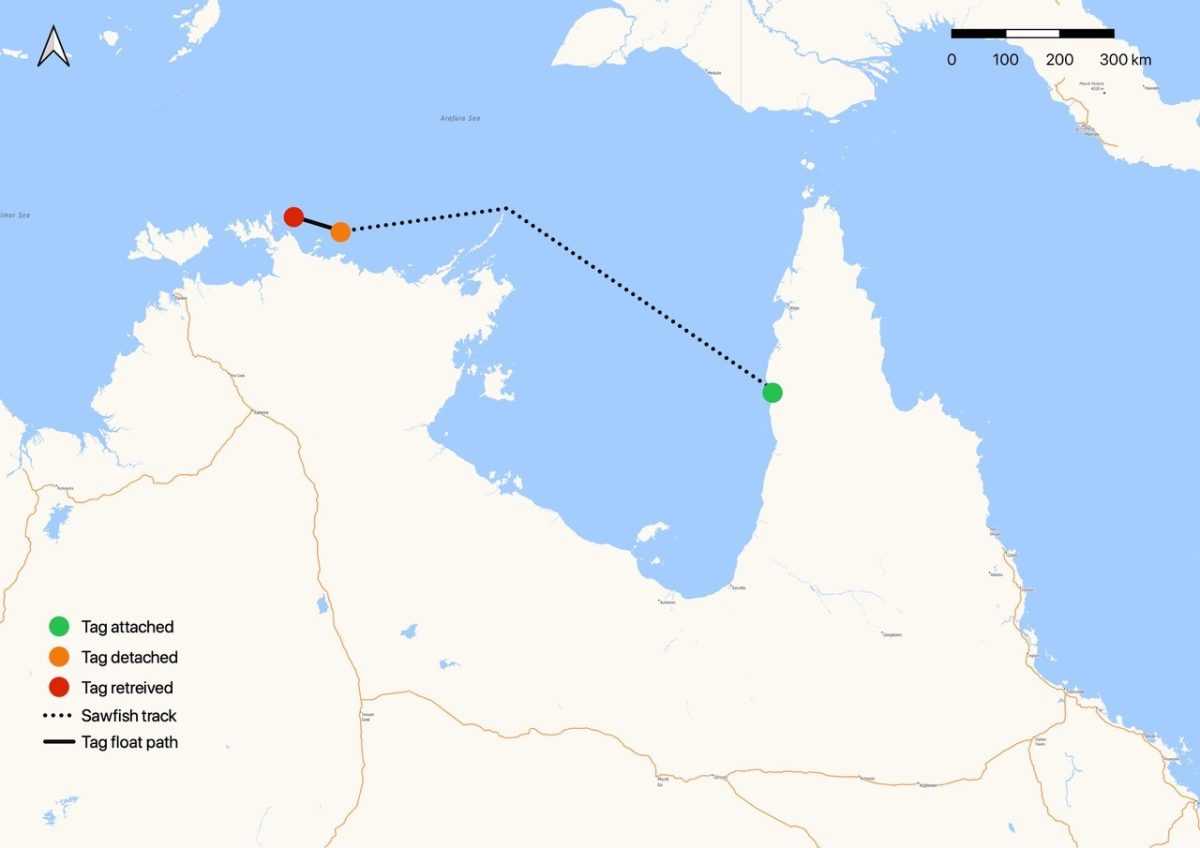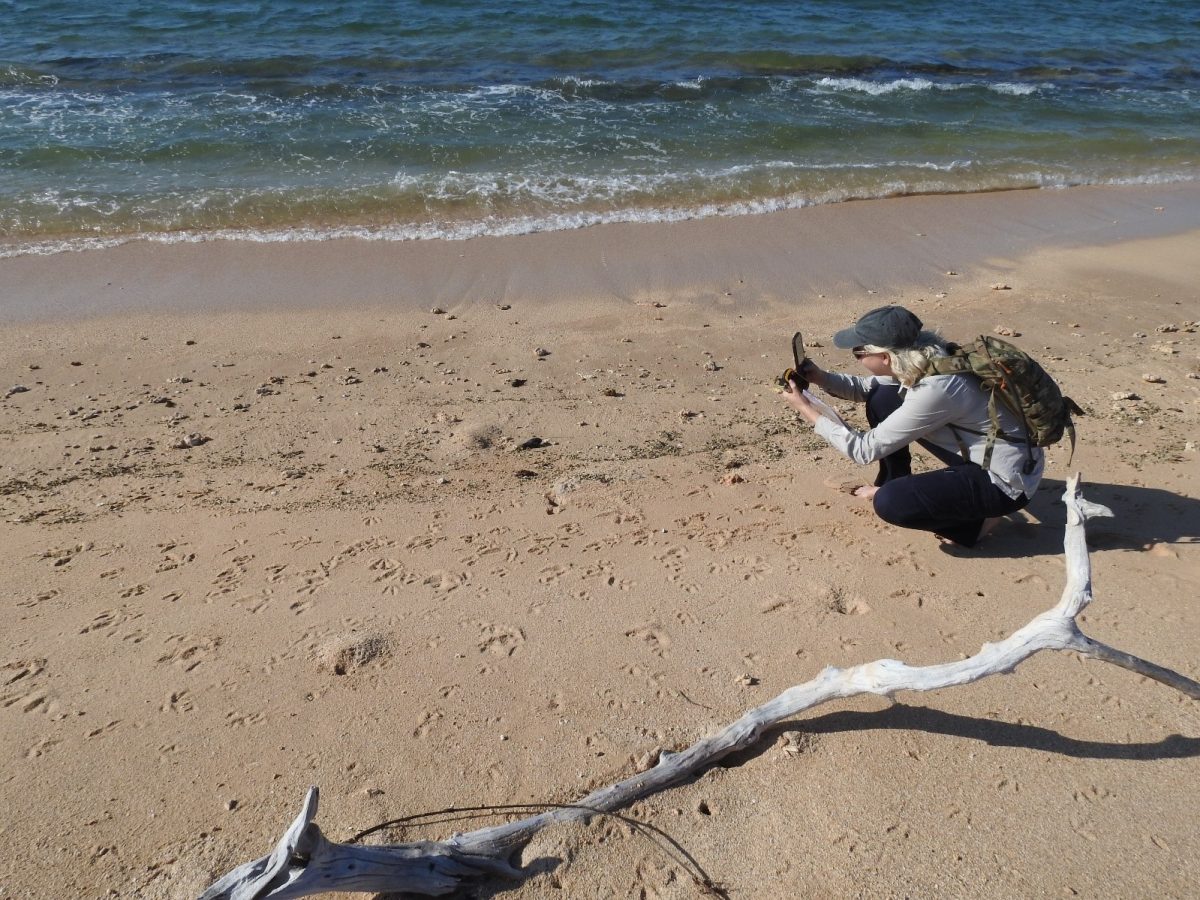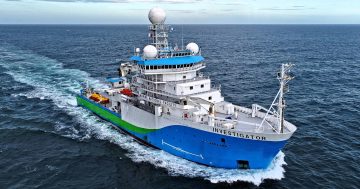
A commercial fisher releases a 2.5 m freshwater sawfish from a gillnet in the Gulf of Carpentaria. Sawfish survive capture in gillnets when care is taken to release them. Photo: CSIRO.
While sawfish have been no friend to fishermen in the past, a new research effort led by the CSIRO and Charles Darwin University is changing how the two relate.
Queensland and Northern Territory commercial fishers are helping the researchers tag and track more than 40 sawfish in an effort to learn more about the dwindling numbers of the animal also known as the carpenter shark.
Conservation managers have been concerned about survival rates because the fish gets caught in nets, quite often by accident. But researchers are using these unfortunate incidents to their advantage by getting the fishers to collect tissue samples and plant satellite transmitter tags on any sawfish they catch.
The largest that’s been tagged is 5.7 metres long according to CSIRO research scientist Dr Richard Pillans.
“I was completely astonished by the distance and speed this adult sawfish travelled,” he said.
“Amazingly, this giant sawfish swam 1000 km over a two-month period from the west side of Cape York to near Croker Island, off the coast of the Northern Territory.”

The distance one giant sawfish travelled – 1000 km from the west side of Cape York to near Croker Island. Photo: CSIRO.
The Commonwealth’s National Environmental Science Program (NESP) has given $1.1 million to support data collection on the populations around Northern Australia, one of the last places in the world this species still exists.
Data from the 40 tagged so far is helping researchers understand how sawfish move and their likelihood of survival after being released from fishing gear, crucial information for conservation efforts.
“The sawfish’s extended snout, or rostrum, has teeth along its edge, so when they come into contact with a net, they can get very entangled,” Dr Pillans said.
“Given they can grow up to seven metres with around two metres of that being rostrum, releasing them can be an extremely hazardous undertaking.”

PhD student Julia Constance takes a photograph of the satellite tag washed up on McCluer Island. Photo: CSIRO.
While the fishermen are there to help on the water, it’s been up to Dr Pillans, his doctoral student Julia Constance and the Minjilang Indigenous Rangers of Croker Island to retrieve the data on land. After the 5.7 metre sawfish’s tag detached and washed ashore at McCluer Island, they sprang into action and made a hasty effort to get there by helicopter.
It took a 45-minute scramble to find the tag on the beach which was “half the size of a stubbie”.
“We are really pleased to have this new information on sawfish movements,” Dr Pillans said.
‘This has given us all a big boost. It just goes to show much can be achieved when the fishing industry, Traditional Owners and scientists work on research as a team.”

Garngi Rangers and Traditional Owners Charlie Wadaga and Eslyn Wauchope (holding the tag) with Julia Constance on the remote beach of McCluer Island. Photo: CSIRO.





